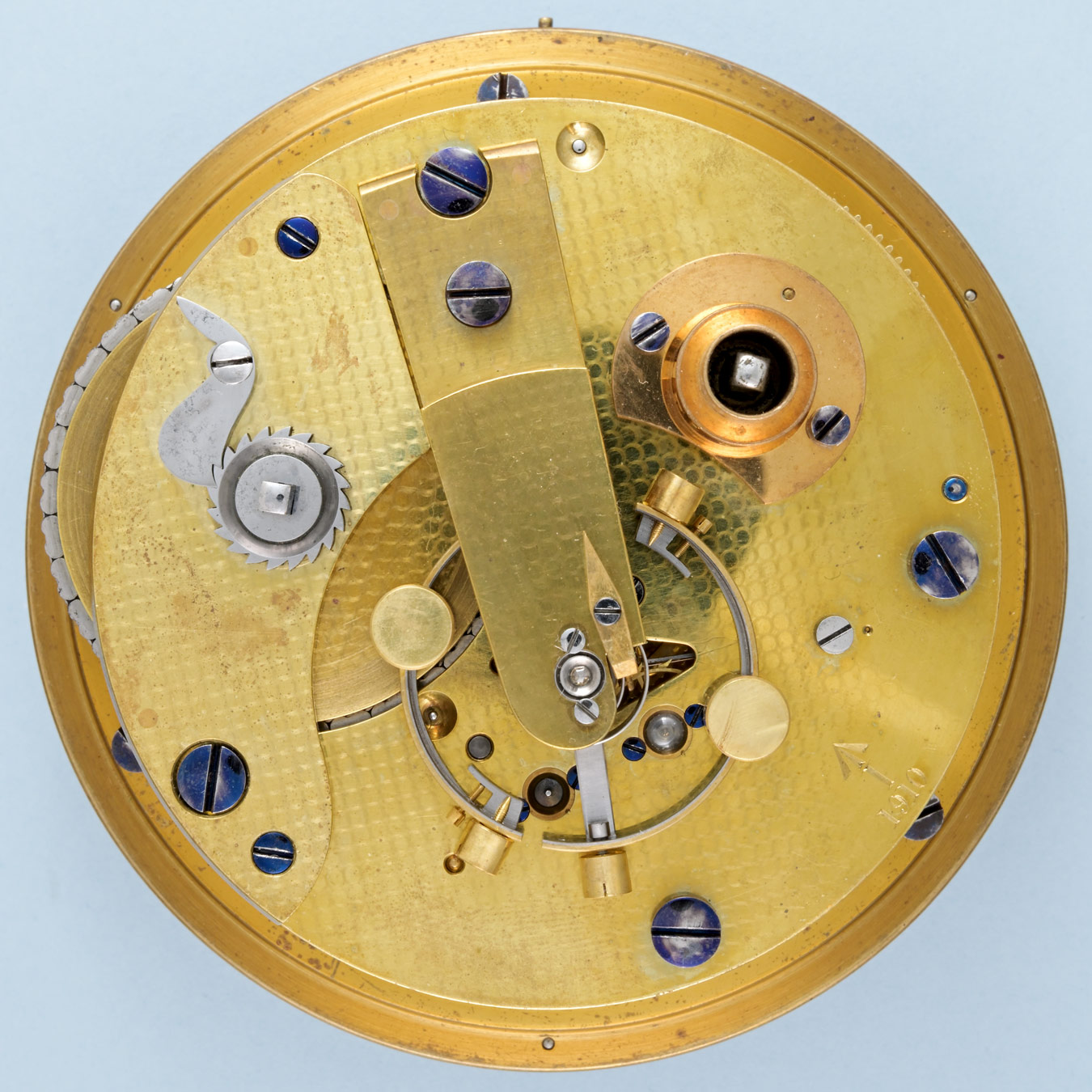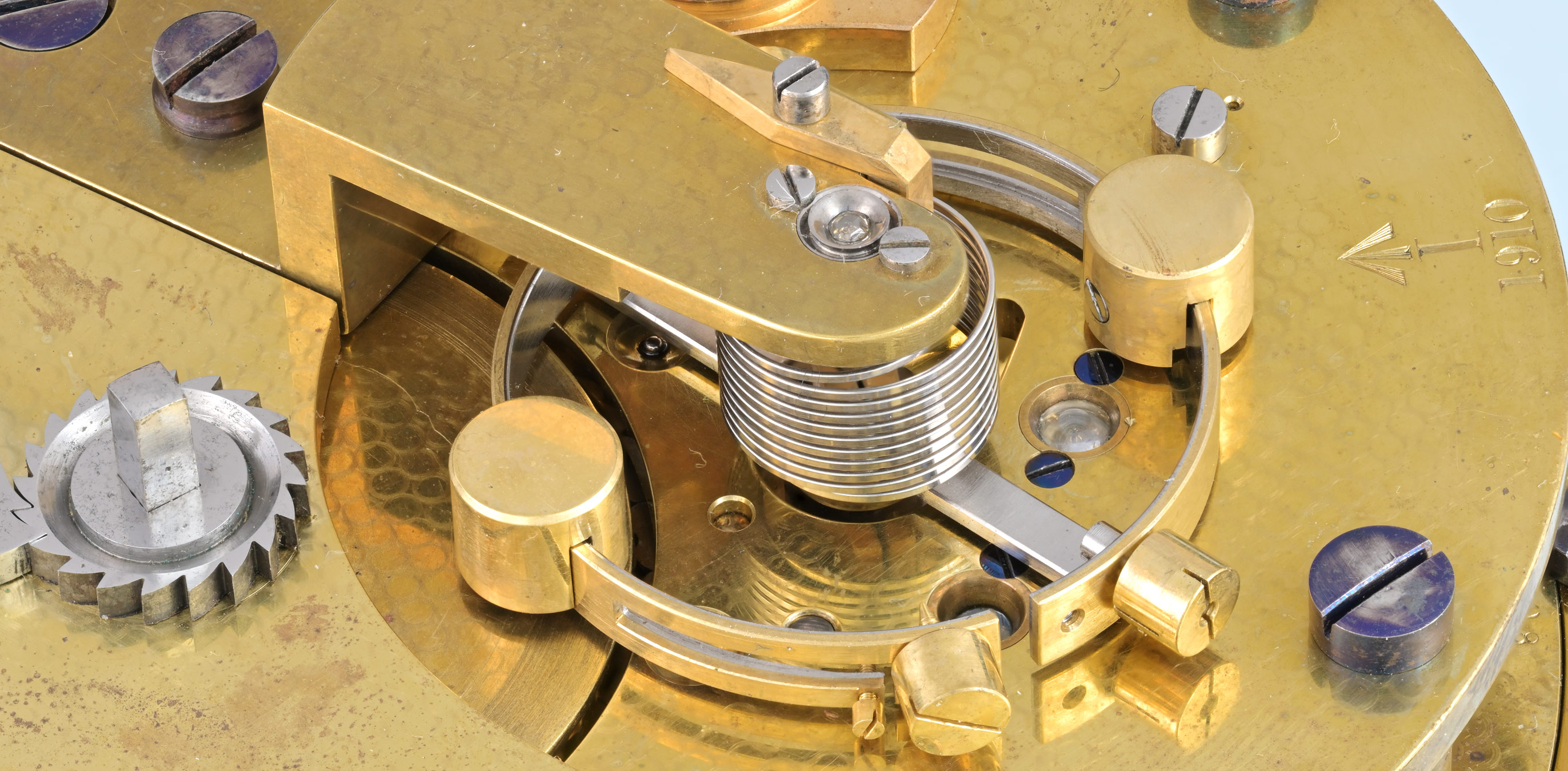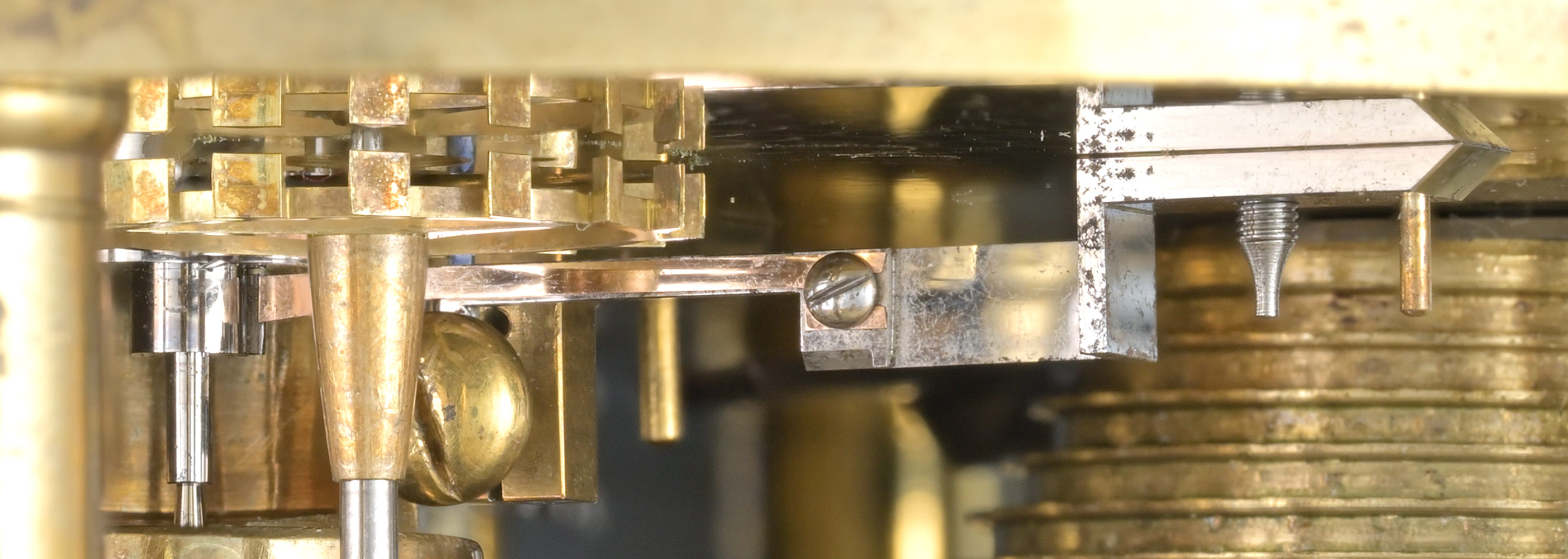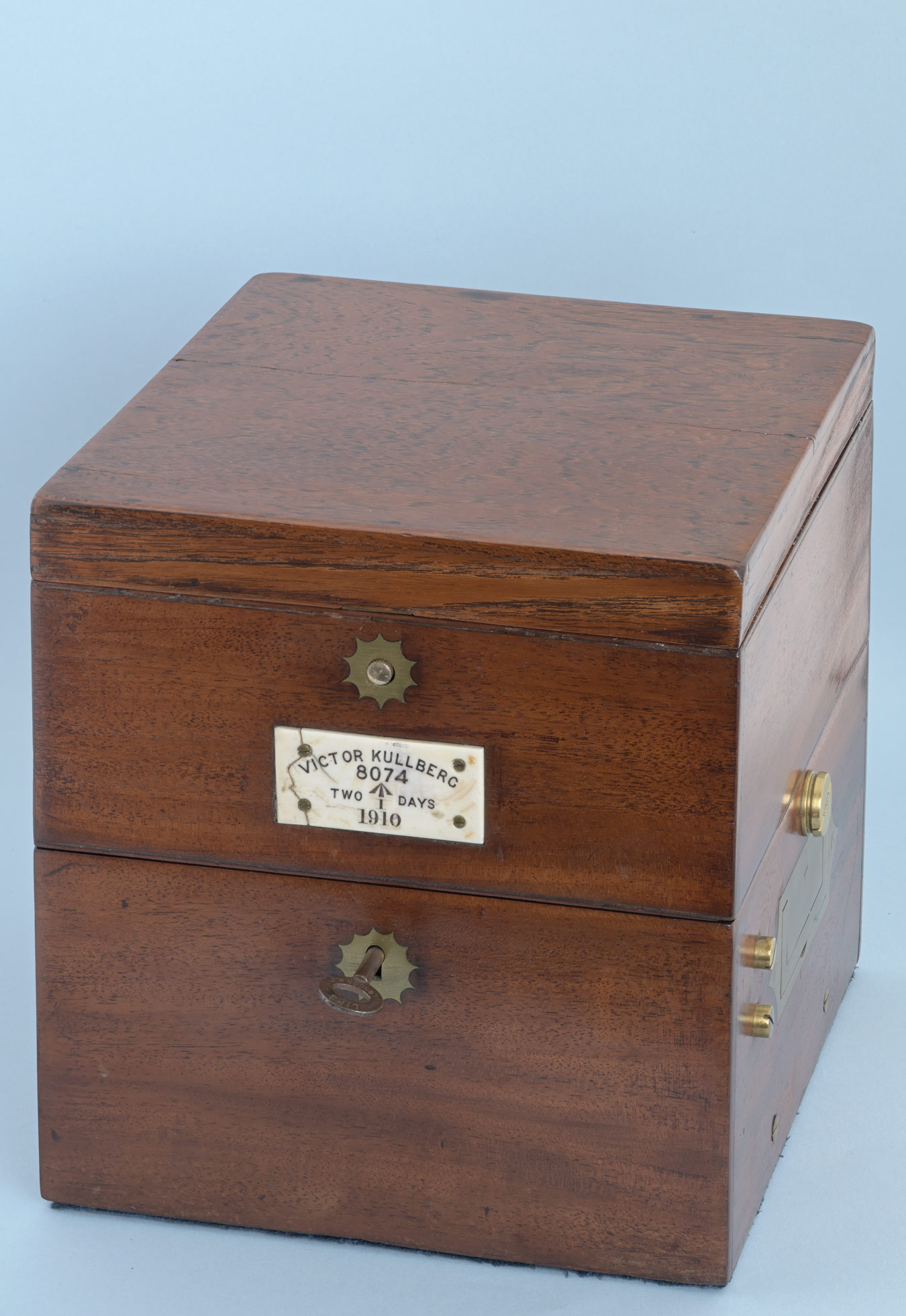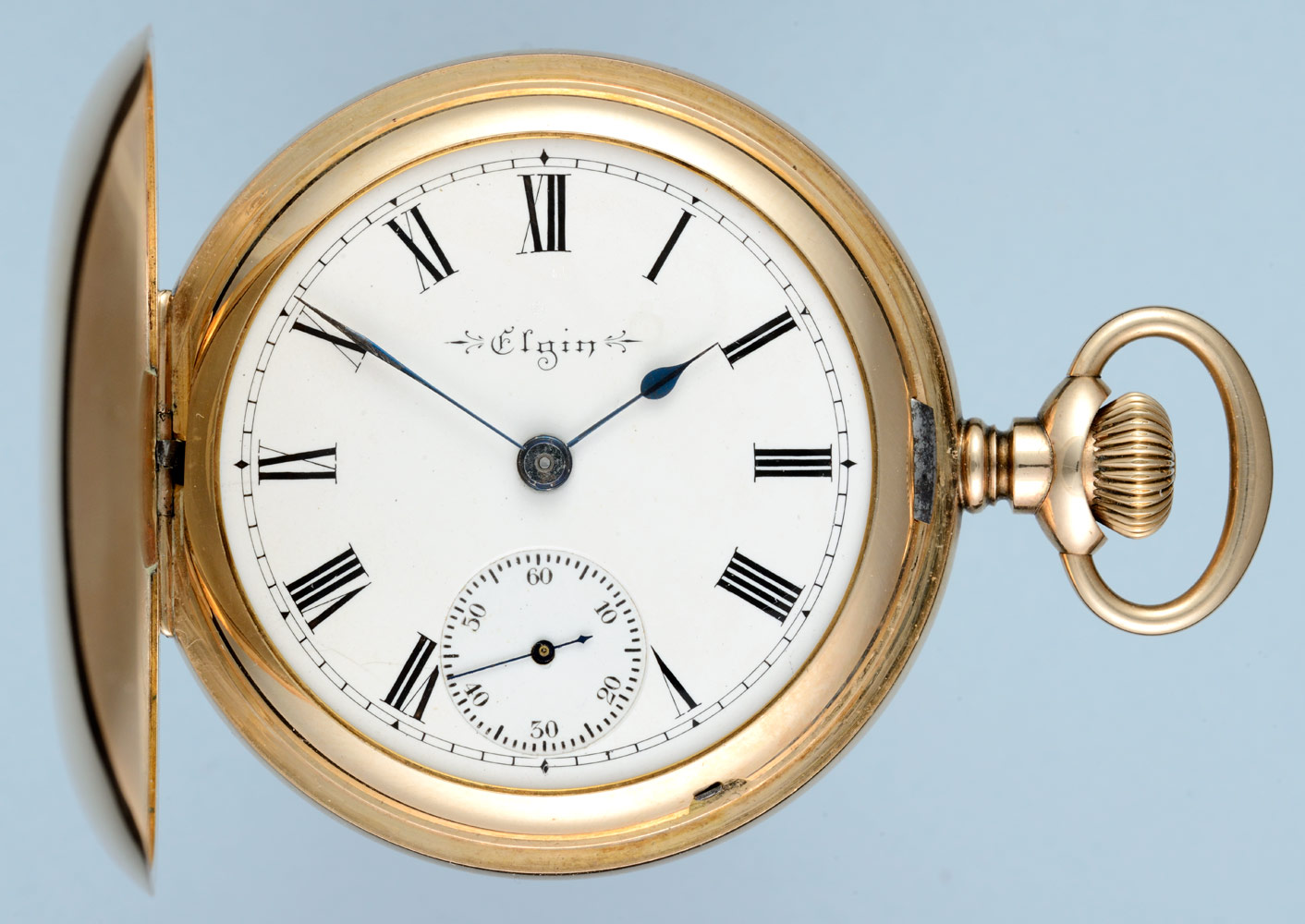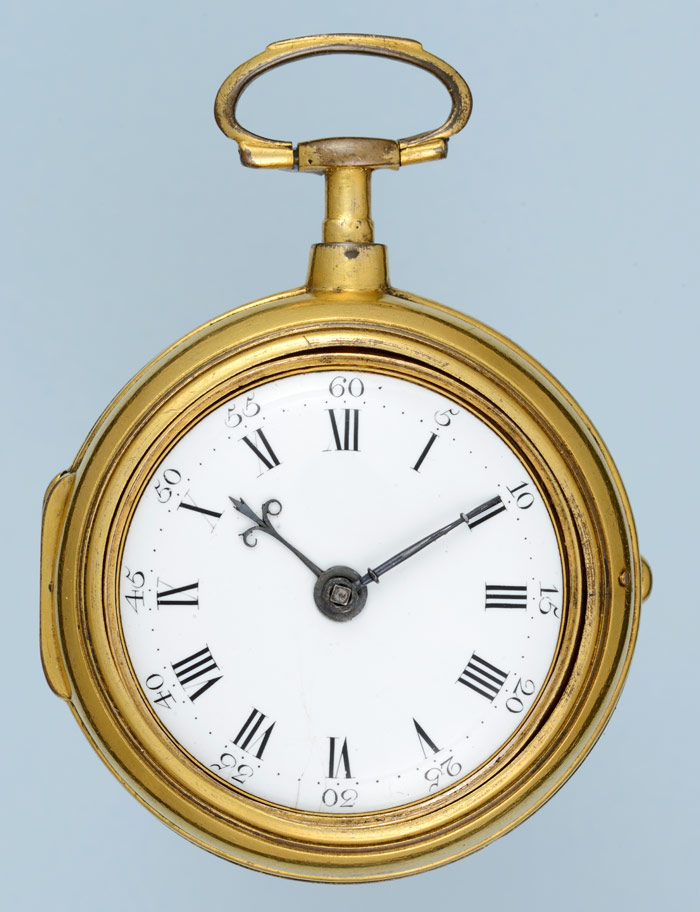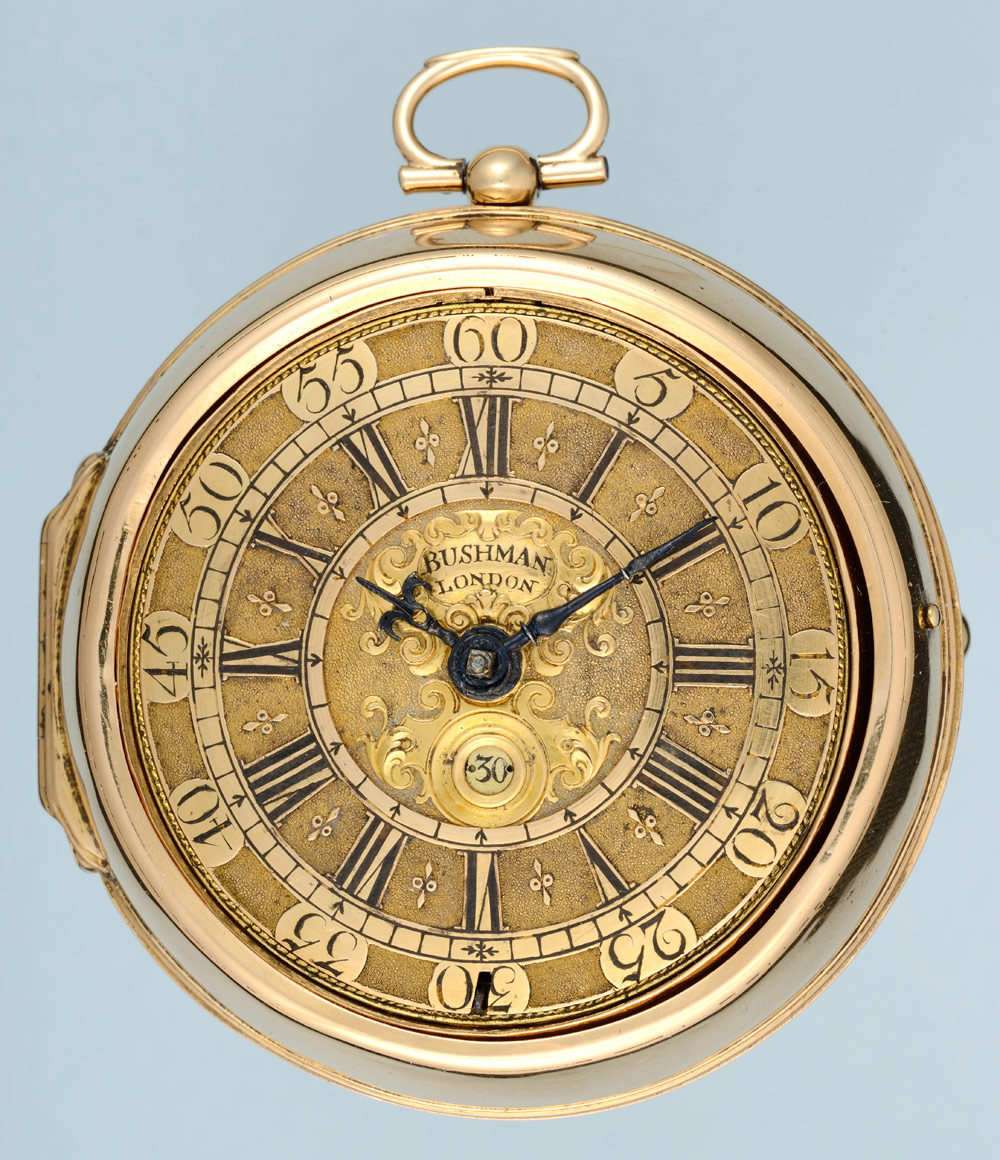A10842
Two Day Marine Chronometer by Kullberg
£5,000.00
Circa 1910
Diameter [dial] 104 mm
Out of stock
Description
A 20th Century English two day marine chronometer by Kullberg. Full plate spotted keywind reverse fusee movement marked with the broad ministry arrow above “I”, four turned pillars secured by blue steel screws. Harrison’s maintaining power with steel click and blue steel spring. Polished steel barrel ratchet wheel and double toothed click on the spotted barrel bridge. Spotted cock with diamond endstone in a polished steel setting. Two arm compensation balance with two circular weights, Kullberg’s later form of middle-error temperature compensation, large timing screws and nuts, freesprung palladium helical hairspring. Earnshaw spring detent escapement, escape pivots with endstones. The movement secured to the gilt dial plate by three blue steel screws. Engraved signed and numbered silvered brass dial with broad ministry arrow, “I” and date, subsidiaries for seconds and power reserve indication, Roman numerals, blue steel hands. Numbered turned brass bowl, rotating shutter to the winding hole, screw brass bezel with flat glass. Brass gimbals and locking mechanism, brass ratchet key. Three tier mahogany box, hinged flush brass handles, later top lid. Rectangular plaque engraved with the maker’s name, number, date, broad ministry arrow and “Two Days”. Included is a photocopy of a letter to the Director General of Stores at the India Office signed by the Astronomer Royal recommending the purchase of this chronometer.






